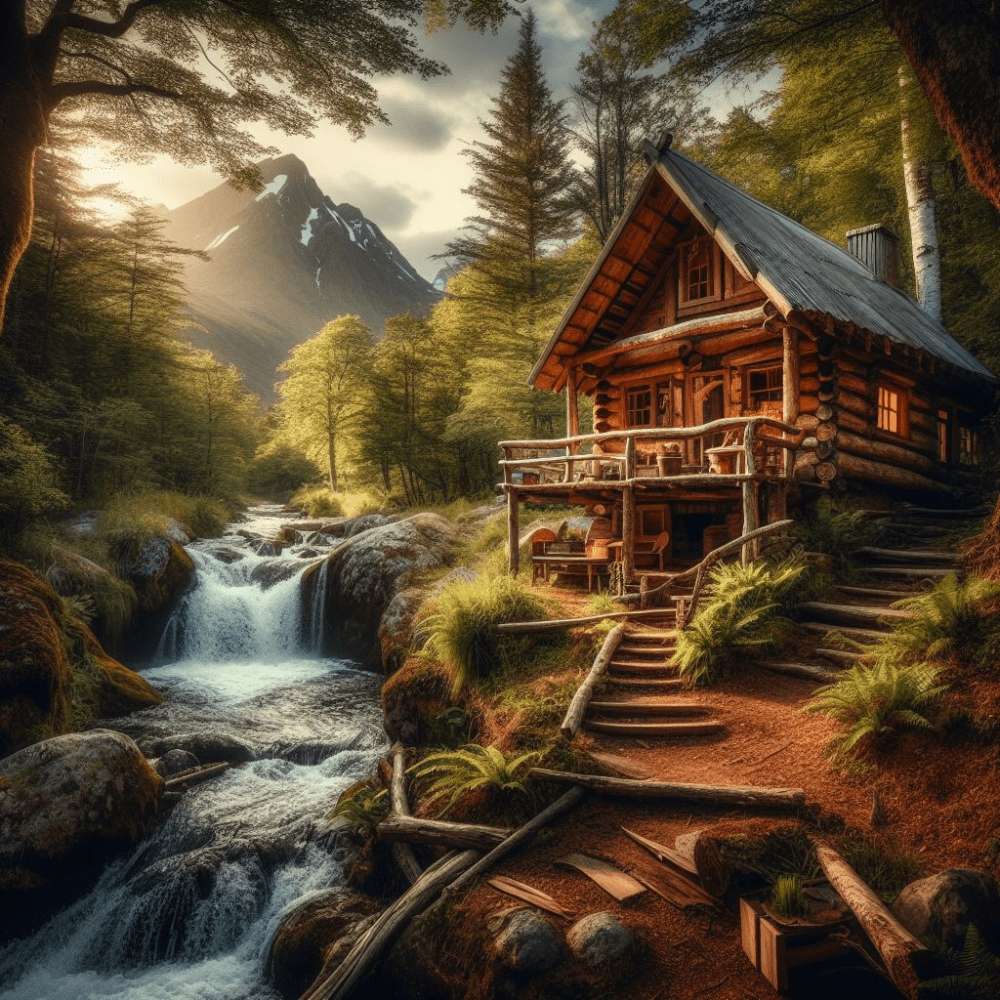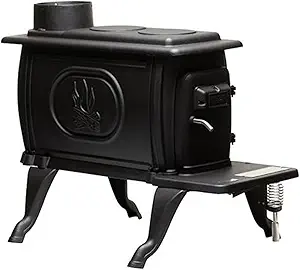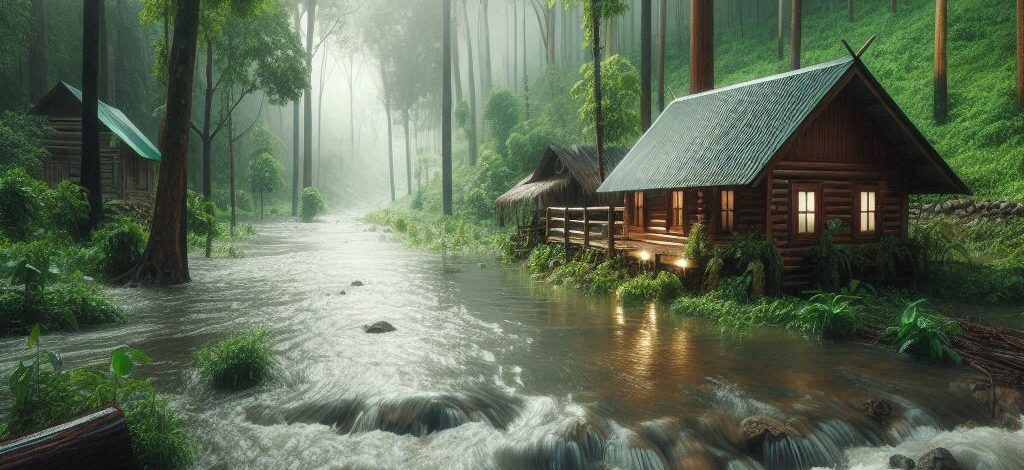Imagine a cozy, tucked-away cabin with a gentle crackle emanating from a corner. That’s right, I’m talking about small cabin wood stoves, the quintessential feature of rustic living. These compact heaters are more than just a heat source; they’re the heart of the cabin, offering a nostalgic warmth that modern heating can’t quite replicate.
You’re going to find out about the blend of aesthetics and functionality that wood stoves bring to small cabins. While they provide essential warmth during colder months, their design also contributes significantly to the ambience of your space.
In recent years, there’s been a noticeable shift back to simpler, more sustainable living, and with that comes the revival of the wood stove. This isn’t just about heating; it’s also about choosing an environmentally friendly option. When used responsibly, wood stoves can be a renewable heat source, aligning with a greener lifestyle.
So, what sets a wood stove apart from other heating options? For cabin dwellers, the choice often comes down to the reliability of wood heat, the allure of the flames, and the ability to operate independent of electricity or gas. I’ll walk you through these considerations, setting you up to dive into the next section, where we’ll discuss how to choose the perfect wood stove for your cabin.
Selecting the Perfect Wood Stove for Your Cabin
I’m going to help you pinpoint the ideal wood stove for your small cabin. This isn’t just about aesthetics; it’s about crafting a harmonious blend between your living space, heating needs, and design preferences
First up, let’s talk about space and size requirements. You’re going to find out why size really does matter when it comes to heating efficiency and cabin safety. I’ll guide you through measuring your space and suggest ideal stove sizes for different cabin dimensions.
Below is a nice small stove for a small cabin. Just CLICK ON THE PHOTO FOR MORE INFORMATION:
Material and design aren’t just about the look; they’re crucial for the longevity and performance of your stove. You’ll discover which materials retain heat best, withstand high temperatures, and complement your cabin’s rustic vibe.
Now, features might not seem like a big deal, but trust me, they are. We’ll dive into the must-have features for safety and convenience, such in-built cooktops and efficient burn technology.
In my opinion, nailing your budget from the start is essential. Don’t worry too much about the sticker shock—I’ll show you how to strike a balance between upfront costs and the long-term benefits of a quality stove.
Remember, your first attempt at choosing a stove doesn’t need to be your last. You can always adjust your approach down the road. But if you choose something that resonates with you now, you’ll love it for years to come.
Installation and Maintenance: Ensuring Safety and Efficiency
Now, getting your wood stove set up in your cabin isn’t just about plugging and playing. It’s about carefully planning and executing an installation that keeps you safe and maximizes efficiency. First off, you’re going to need a safe installation space that complies with fire codes, which usually entails a certain clearance from walls and a proper foundation to handle the heat.
Regular maintenance of your wood stove is non-negotiable if you’re aiming for a warm and worry-free winter. Cleaning the chimney and inspecting the stove and gaskets annually is your best bet against unwanted surprises. Neglect isn’t an option unless you’re fond of smoke in your living room or, worse, a fire hazard. (Refer to the recommended book above).

I’m here to help you with the fine print too. Before any of this becomes a cozy reality, you’ll want to check with the local authorities. Different areas have different rules, and your cabin wood stove will need to meet specific regulations. And, consider the impact your stove might have on your cabin’s insurance policy – it’s best to play it safe and check in with your insurer.
Now, if you run into any snags, remember that troubleshooting common issues doesn’t always require a professional. Simple things like ensuring the wood is dry, checking for drafts, and making sure the flue is clear can save you a lot of headaches. But remember, if in doubt, always seek expert advice.
The Sustainable Hearth: Making the Most of Your Cabin Wood Stove
If you want to get the most out of your cabin wood stove, start by burning wisely. Efficient burning means less pollution and more warmth, which is good for both the planet and your pocket. Always use dry, seasoned wood; it burns hotter and cleaner than wet wood.

Choosing the right firewood can make a significant difference in heat output and stove performance. Hardwoods, like oak and maple, burn longer and provide more consistent heat compared to softer woods.
Your cozy cabin experience doesn’t just end at buying and installing a wood stove. It’s also about embracing a lifestyle that values sustainability and self-sufficiency. Cultivating or sourcing your firewood responsibly plays a huge part in this journey.
Wood stove stewardship is both a privilege and a responsibility. This entails regular upkeep, mindful fuel consumption, and staying informed about the best practices in wood stove usage. Remember, your wood stove isn’t just a source of heat; it’s the heart of your cabin, radiating warmth, comfort, and a sustainable way of living.
As an Amazon Associate I earn from qualifying purchases.








Hi there
I like that your article is highly informative and engaging, highlighting the benefits of wood stoves in providing efficient heating and creating a cozy atmosphere. The detailed breakdown of different stove types and their features helps readers make informed decisions for their cabin needs.
I can see how this content would be useful to alot of people.
Thanks again
Thank you Troy,
If you have a cabin without electricity, then wood heat is really the only choice unless you want to use propane which is expensive.
Another great thing about using wood burning stoves is that if you do have a cabin in the wilderness, there is most likely dead and fallen trees around your area that can be harvested for burning. Harvesting these dead trees not only gives you a firewood resource, it also helps keep the forest free from fast burning materials in case of a forest fire. (The wood stove owner just needs to make sure to get a firewood permit if required in his area).
Mike Powers
Cabin Living Today